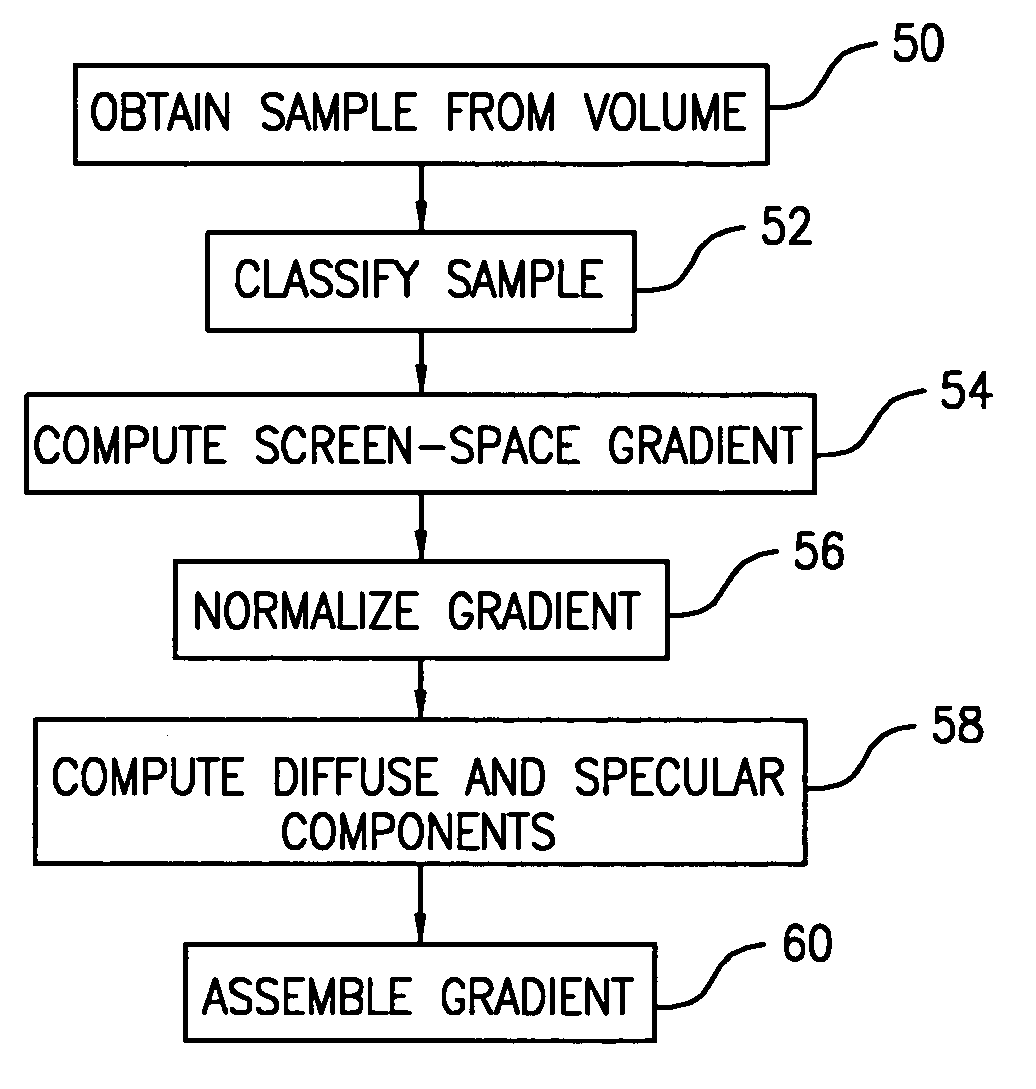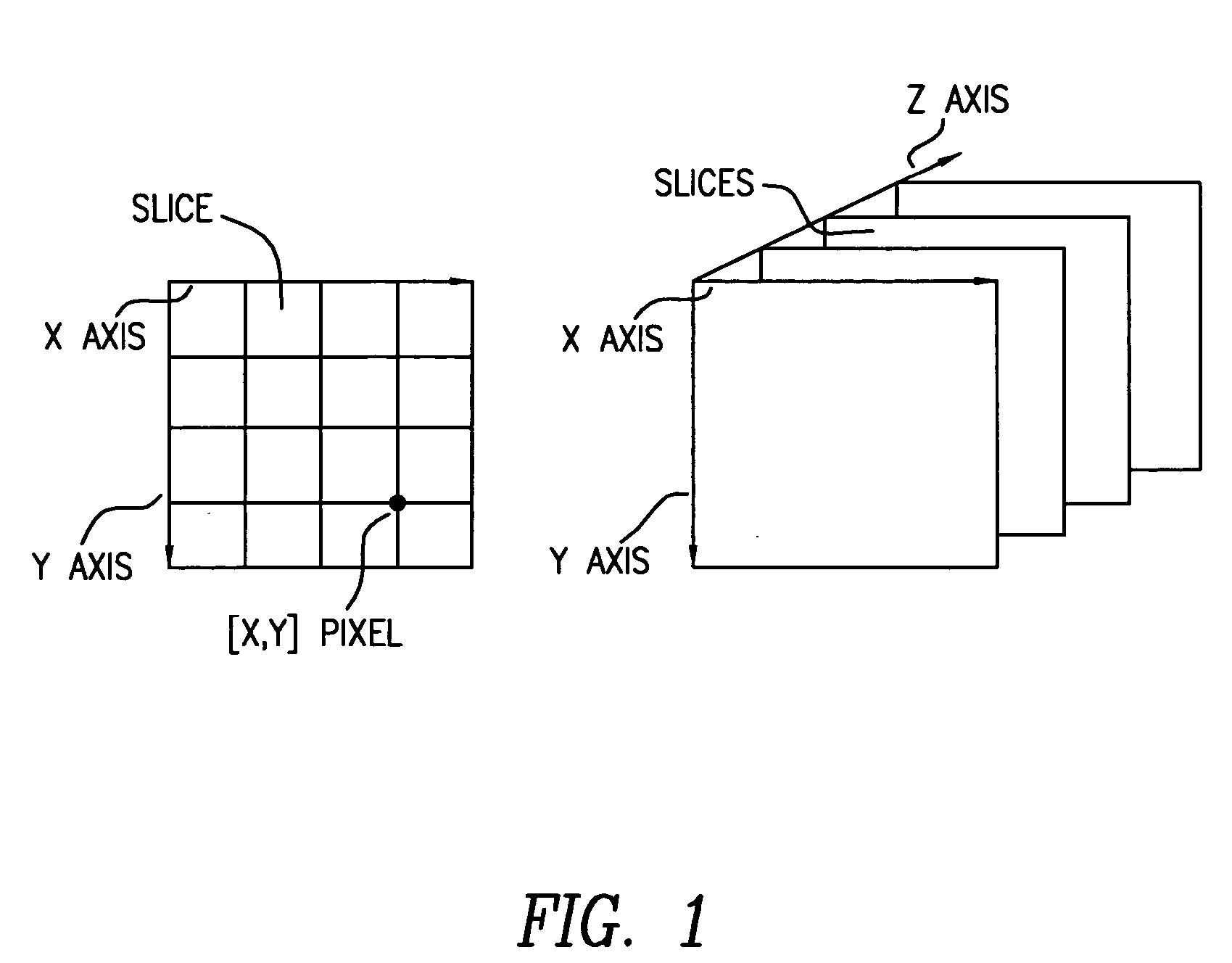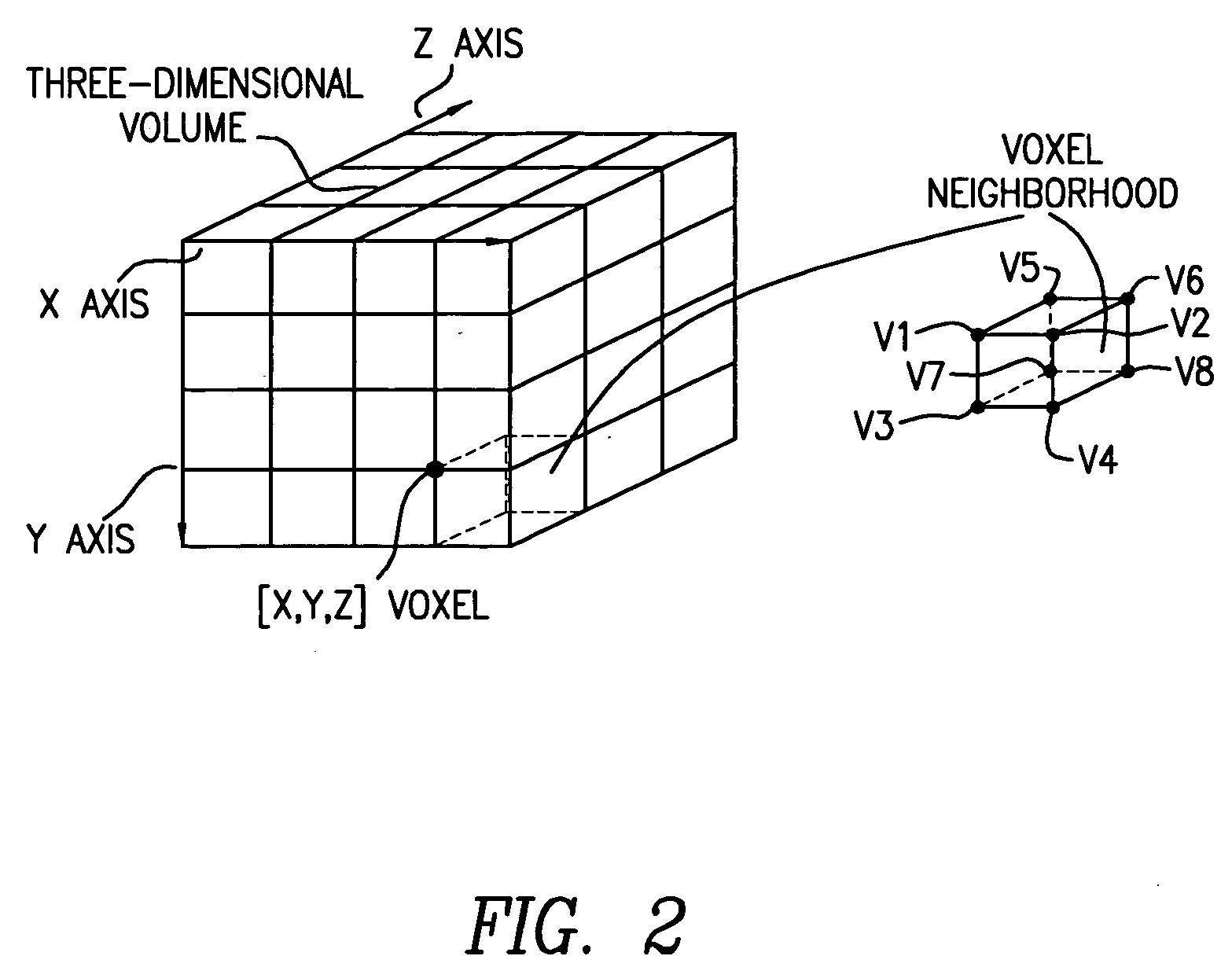High performance shading of large volumetric data using screen-space partial derivatives
a technology of partial derivatives and large volumetric data, applied in the field of volumetric data set rendering, can solve the problems of reducing the quality of volumetric rendering, affecting the performance affecting the quality of the volumetric rendering, so as to improve the image quality of texture-based volume rendering and reduce the overhead of acquiring neighboring data
- Summary
- Abstract
- Description
- Claims
- Application Information
AI Technical Summary
Benefits of technology
Problems solved by technology
Method used
Image
Examples
Embodiment Construction
[0016] Data Acquisition.
[0017] The data processed by this invention is a three-dimensional array of data. Referring to FIG. 1, the data consists of a sequence of adjacent “images,” where each image is a two-dimensional image array of data points. Each grid value of a two-dimensional image array is called a picture element, or “pixel.” A series of such images may be arranged in sequential order, and each two-dimensional image is termed a SLICE. Thus, a volume is formed from a plurality of slices.
[0018] When performing full body scans with a magnetic imaging machine, it is common to generate approximately 3000 slices of data. These slices may be approximately 0.4 mm apart.
[0019] Referring to FIG. 2, each grid value of a three-dimensional volume array is called a volume element, or “voxel.” A voxel has a voxel neighborhood. The voxel neighborhood includes the corner points of a cube, which are designated V1, V2, V3, V4, V5, V6, V7 and V8.
[0020] The acquisition of this type of data ...
PUM
 Login to View More
Login to View More Abstract
Description
Claims
Application Information
 Login to View More
Login to View More - R&D
- Intellectual Property
- Life Sciences
- Materials
- Tech Scout
- Unparalleled Data Quality
- Higher Quality Content
- 60% Fewer Hallucinations
Browse by: Latest US Patents, China's latest patents, Technical Efficacy Thesaurus, Application Domain, Technology Topic, Popular Technical Reports.
© 2025 PatSnap. All rights reserved.Legal|Privacy policy|Modern Slavery Act Transparency Statement|Sitemap|About US| Contact US: help@patsnap.com



